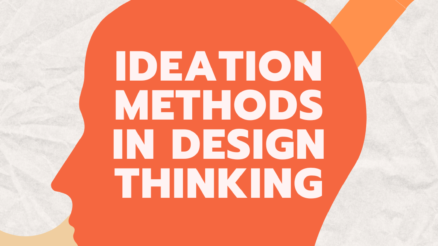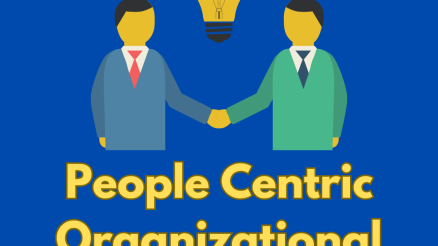The ability to lead through change is not just an asset but a necessity.
In today’s business world, change is constant. Whether you lead a small team or a large organization, knowing how to navigate change is essential for success.
Change leaders roadmap is an essential tool that guides change leaders to navigate through this journey.
This roadmap aims to equip current and aspiring change leaders with the insights, strategies, and tools needed to effectively drive and sustain transformational efforts.
Whether you are at the helm of a small team or an entire organization, the principles and practices outlined here will help you to understand, plan, and execute change initiatives with confidence and clarity, paving the way for success in an ever-changing world.
Let’s learn more about change leaders roadmap.
Definition of change leadership
Change leadership refers to the process of leading an organization or team through a period of transition or transformation.
It involves envisioning and driving forward changes that improve the organization’s future performance and success.
Unlike traditional management, which often focuses on maintaining stability and managing existing processes, change leadership is about setting a new direction and inspiring and guiding people towards it.
Learn more about: The role of leadership in change management
What is change leaders roadmap
Change leaders roadmap” is like a map that helps leaders steer their organizations through big changes. It’s a step-by-step guide that lays out what leaders need to do to make change happen smoothly.
This roadmap isn’t just about having a plan—it’s about using strategic thinking, managing people well, and always learning to guide leaders through the tricky process of change.
It emphasizes the importance of leadership, communication, adaptability, and resilience in making change effective and sustainable.
Ten core elements of the change leaders roadmap
Here are ten core elements of the change leaders roadmap that help us further understanding the concept.
1. Assessment of the Current State:
This initial step involves thoroughly understanding the current situation of the organization. It requires evaluating existing processes, structures, culture, and performance metrics to identify strengths, weaknesses, opportunities, and threats.
This assessment serves as the foundation for all subsequent change efforts, as it helps in pinpointing the areas that require change and sets the baseline for measuring future progress. Change leaders use this analysis to build a compelling case for change, highlighting why change is necessary and what could happen if change does not occur.
Learn more about: How to Write a Business Case for Change Management?
2. Vision and Objective Setting:
After assessing the current state, the next step is to define a clear, inspiring vision for the future and establish specific objectives to achieve this vision. This vision should be ambitious yet achievable, providing a clear direction for the change initiative.
Objectives need to be SMART (Specific, Measurable, Achievable, Relevant, Time-bound) to ensure they can guide action and enable measurement of progress. This step is crucial as it aligns the entire organization’s efforts and helps in communicating the purpose and goals of the change.
Learn more about: How to Create Powerful Vision for Organizational Change?
3. Stakeholder Engagement:
Successful change requires the support and involvement of various stakeholders, including employees, management, customers, and possibly external partners. Identifying these stakeholders, understanding their perspectives, interests, and concerns, and engaging them effectively is vital.
This involves communicating with them, involving them in the change process, and addressing their concerns. Effective stakeholder engagement not only garners support but also leverages the insights and expertise of different groups to improve the quality of the change process.
Learn more about: How to Communicate Change to Stakeholders?
4. Development of a Change Strategy:
This involves creating a detailed action plan for implementing the change. The strategy should outline the steps needed to achieve the vision, allocate resources, set timelines, and define key responsibilities. It also includes developing policies, procedures, and structures to support the change process.
The strategy should be flexible enough to adapt to unforeseen challenges and opportunities that arise during the implementation phase.
Learn more about: How to Develop Change Management Strategy?
5. Communication Plan:
Effective communication is crucial for the success of any change initiative. This step involves developing a comprehensive communication plan that addresses who will receive information, what information they will receive, when they will receive it, and how it will be communicated.
The plan should ensure consistent and transparent communication to keep stakeholders informed, engaged, and motivated throughout the change process.
Learn more about: 08 Steps to Create Communication Plan in Change Management
6. Implementation and Execution:
This is the action phase where the planned change is put into operation. It involves executing the strategies and plans that have been developed, managing resources, and ensuring that activities are aligned with the objectives of the change initiative.
During this phase, leaders play a key role in motivating and guiding their teams, solving problems, and ensuring that the change is implemented smoothly.
7. Monitoring and Adapting:
As the change is implemented, it’s important to continuously monitor progress and the impact of the change. This involves collecting and analyzing data, getting feedback from stakeholders, and comparing results against the set objectives.
Based on this information, leaders may need to make adjustments to the strategy or implementation plans to ensure the change initiative remains on track and is effective.
8. Building a Supportive Culture:
For change to be sustainable, it needs to be embedded in the organization’s culture. This involves promoting values and behaviors that support the change, such as flexibility, innovation, and collaboration.
Leaders should model these behaviors and recognize and reward team members who contribute to the change positively. Building a supportive culture helps in ensuring that the change is accepted and maintained over the long term.
9. Sustaining the Change:
This element focuses on embedding the change within the organization so that it becomes the new norm. It involves ensuring that the changes are integrated into everyday business practices and processes.
Sustaining change requires ongoing effort and reinforcement to prevent reverting to old ways of working. It may involve continuous training, support, and adjustment of policies and practices to align with the new state.
10. Review and Continuous Improvement:
The final element is about reflecting on the change process and outcomes. It involves evaluating what worked well and what didn’t, learning from the experience, and applying these lessons to future change initiatives.
Continuous improvement is a key principle here, as it ensures that organizations do not become complacent and are always looking for ways to improve and adapt to new challenges and opportunities.
Learn more about: Change Management and Continuous Improvement – Connection and Benefits
Common Challenges and Solutions of Change Leaders Roadmap
Implementing a Change Leaders Roadmap can present several common challenges, each requiring specific solutions to ensure the success of the change initiative:
Resistance to Change: One of the most common challenges is resistance from employees or other stakeholders. This resistance often stems from fear of the unknown, comfort with the current state, or disagreement with the change.
Solution: To overcome this, change leaders should focus on clear and transparent communication, explaining the reasons for the change and its benefits. Engaging stakeholders early in the process, addressing their concerns, and involving them in decision-making can also help in reducing resistance.
Lack of Clear Vision: Without a clear and compelling vision, change efforts can lack direction and purpose, leading to confusion and disengagement among team members.
Solution: Leaders should develop and communicate a clear, detailed vision for what the change will achieve. This vision should be relatable and motivating, providing a strong reason for the team to embrace the change.
Inadequate Planning and Resources: Underestimating the resources, time, and planning required for change can lead to overextension and failure.
Solution: Comprehensive planning, including a realistic assessment of the resources (time, budget, personnel) required, is essential. Adequate support and resources should be allocated to the change initiative to ensure its success.
Poor Communication: Ineffective communication can result in misinformation, rumors, and anxiety among employees, all of which can hinder the change process.
Solution: Develop a clear communication strategy that includes regular updates, open forums for questions and feedback, and transparent sharing of both successes and challenges. Tailoring communication to different audiences is also important.
Inability to Adapt: Rigidity in the change process can lead to failure, especially if unexpected challenges or new information arise.
Failure to adapt to unexpected challenges or new information can result in the failure of the change process.
Solution: Change leaders should remain flexible and adaptable, ready to adjust plans and strategies in response to new data or feedback. Encouraging a culture that views mistakes and setbacks as opportunities for learning is also crucial.
Failure to Involve Key Stakeholders: Neglecting to engage important stakeholders can result in a lack of support or even active opposition to the change.
Solution: Identify and involve key stakeholders from the outset. Regularly seek their input and feedback, and work collaboratively to address concerns and incorporate their ideas where feasible.
Not Addressing Organizational Culture: Overlooking the impact of change on the organization’s culture can lead to a clash between the new way of doing things and the established norms and values.
Solution: Leaders should actively work to align the organization’s culture with the new direction. This may involve changing policies, recognizing and rewarding behaviors that align with the change, and continuously communicating how the new changes reflect the organization’s values.
Insufficient Training and Support: Employees may struggle to adapt to change due to a lack of necessary skills or understanding.
Solution: Provide comprehensive training and continuous support. Equip your team with the skills and knowledge they need to succeed in the new environment.
Ineffective Leadership: The change process can falter if leaders are not fully committed, lack the necessary skills, or fail to lead by example.
Solution: Leaders should be fully engaged in the change process, demonstrate their commitment, and lead by example. Investing in leadership development can also be beneficial.
Failure to Sustain Change: Initial successes in a change initiative can fade without efforts to embed the change into the organization’s fabric.
Solution: Continuously reinforce and support the change. Integrate new behaviors and practices into everyday operations, and ensure they are reflected in all aspects of the organization, from policies to performance evaluations.
Final Words
As we conclude our journey through the change leaders roadmap, it’s clear that navigating change is no small feat. It requires a blend of strategic planning, empathetic leadership, and a relentless commitment to improvement. Remember, change isn’t just about reaching a destination; it’s about the journey of transformation your team and organization embark on. It involves understanding where you are, envisioning where you want to be, and meticulously charting the course to get there. Along the way, the engagement of stakeholders, clear communication, and a supportive culture are your steadfast allies.



